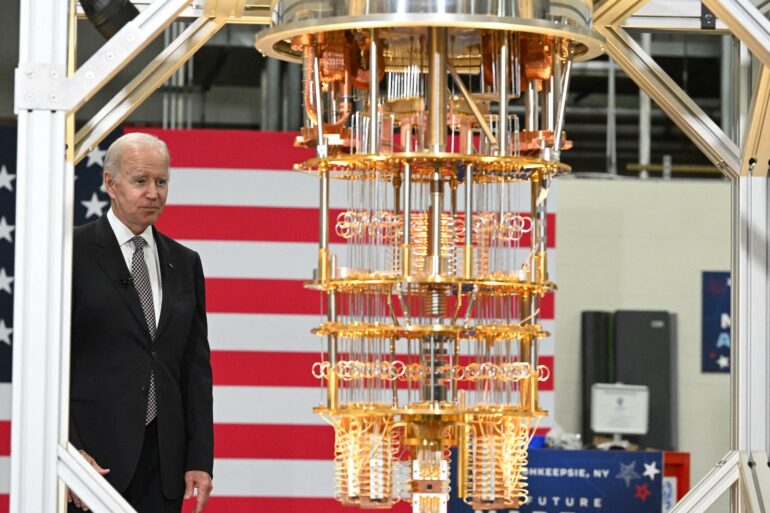Quantum advantage is the milestone the field of quantum computing is fervently working toward, where a quantum computer can solve problems that are beyond the reach of the most powerful non-quantum, or classical, computers.
Quantum refers to the scale of atoms and molecules where the laws of physics as we experience them break down and a different, counterintuitive set of laws apply. Quantum computers take advantage of these strange behaviors to solve problems.
There are some types of problems that are impractical for classical computers to solve, such as cracking state-of-the-art encryption algorithms. Research in recent decades has shown that quantum computers have the potential to solve some of these problems. If a quantum computer can be built that actually does solve one of these problems, it will have demonstrated quantum advantage.
I am a physicist who studies quantum information processing and the control of quantum systems. I believe that this frontier of scientific and technological innovation not only promises groundbreaking advances in computation but also represents a broader surge in quantum technology, including significant advancements in quantum cryptography and quantum sensing.
The source of quantum computing’s power
Central to quantum computing is the quantum bit, or qubit. Unlike classical bits, which can only be in states of 0 or 1, a qubit can be in any state that is some combination of 0 and 1. This state of neither just 1 or just 0 is known as a quantum superposition. With every additional qubit, the number of states that can be represented by the qubits doubles.
This property is often mistaken for the source of the power of quantum computing. Instead, it comes down to an intricate interplay of superposition, interference and entanglement.
Interference involves manipulating qubits so that their states combine constructively during computations to amplify correct solutions and destructively to suppress the wrong answers. Constructive interference is what happens when the peaks of two waves – like sound waves or ocean waves – combine to create a higher peak. Destructive interference is what happens when a wave peak and a wave trough combine and cancel each other out. Quantum algorithms, which are few and difficult to devise, set up a sequence of interference patterns that yield the correct answer to a problem.
Entanglement establishes a uniquely quantum correlation between qubits: The state of one cannot be described independently of the others, no matter how far apart the qubits are. This is what Albert Einstein famously dismissed as “spooky action at a distance.” Entanglement’s collective behavior, orchestrated through a quantum computer, enables computational speed-ups that are beyond the reach of classical computers.
